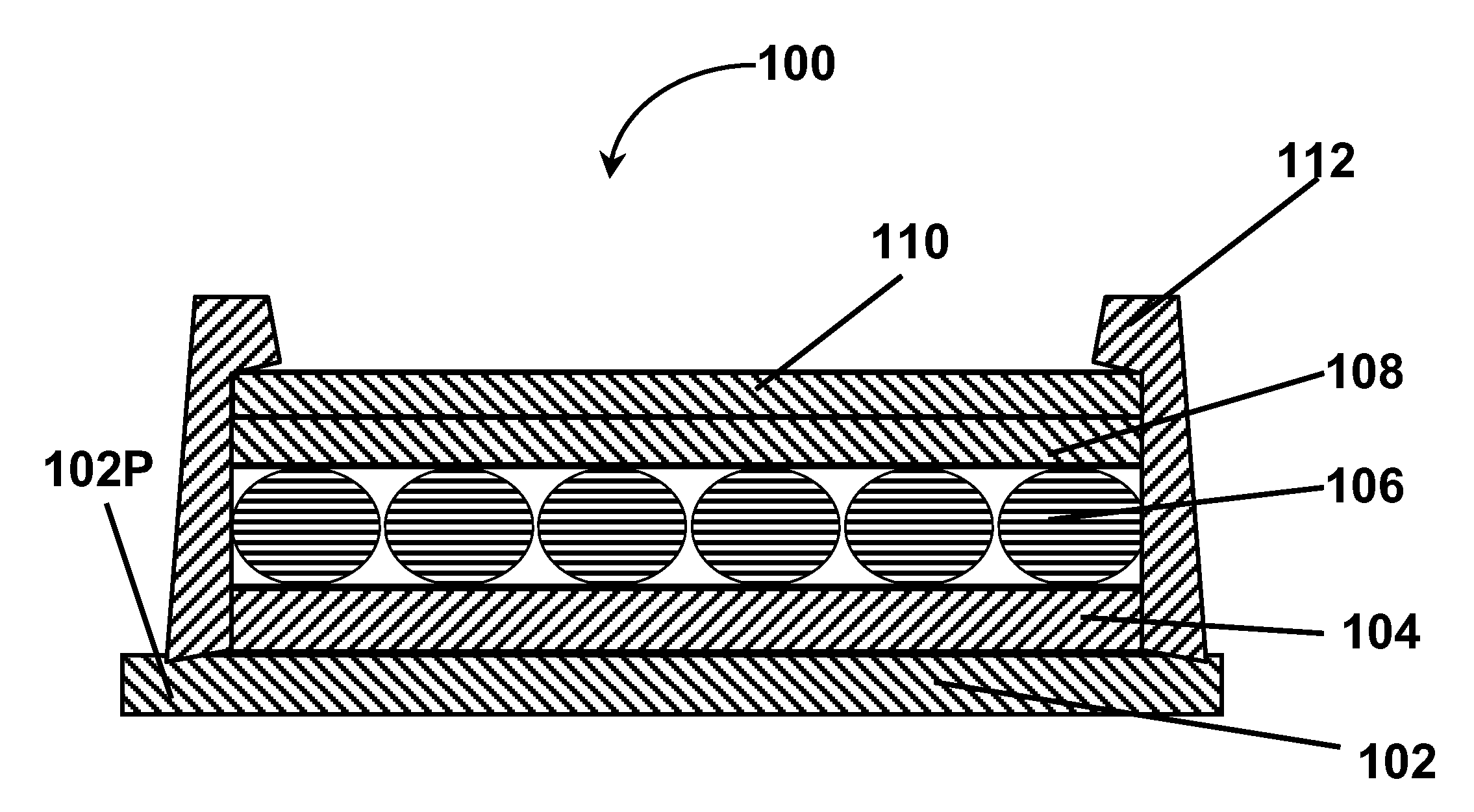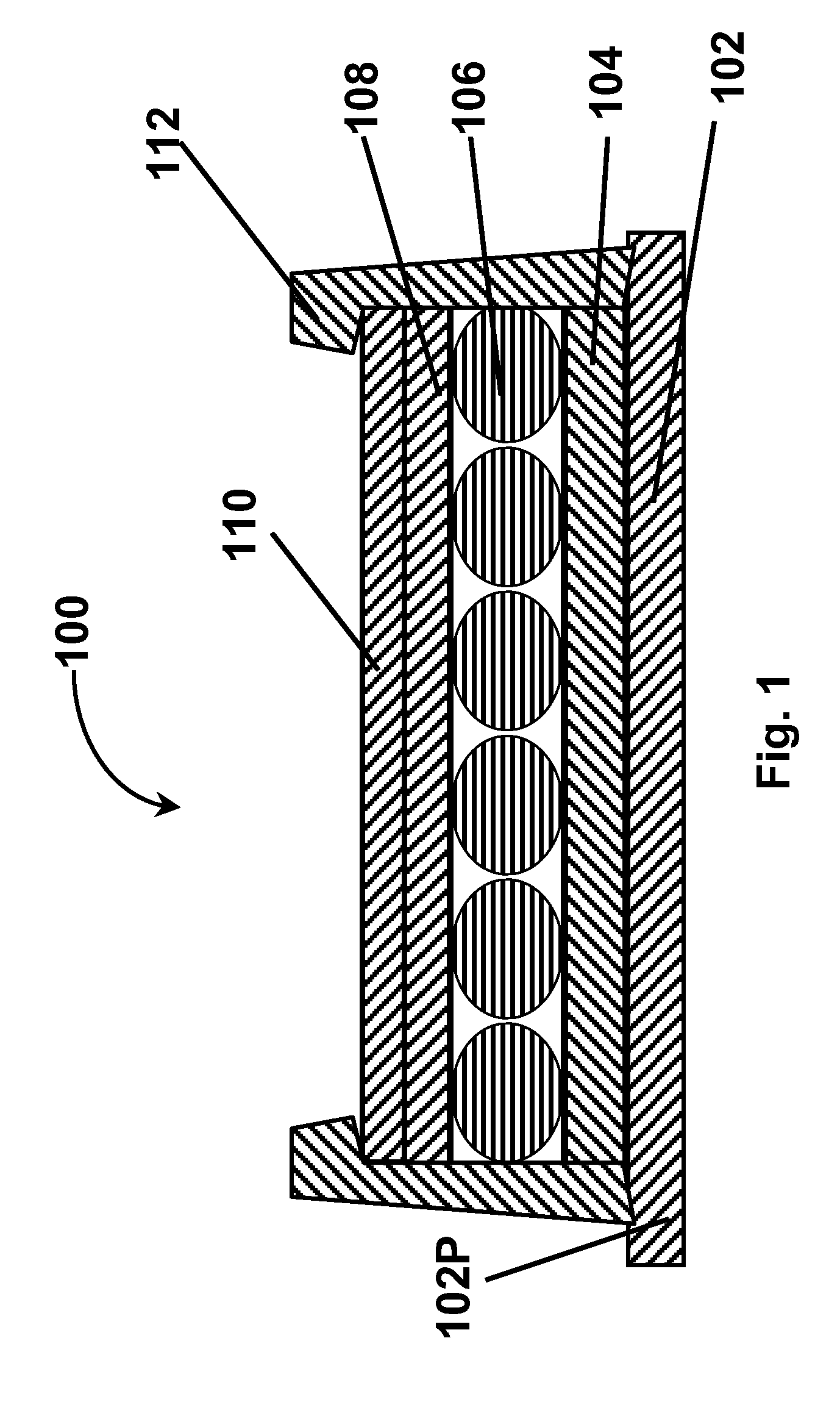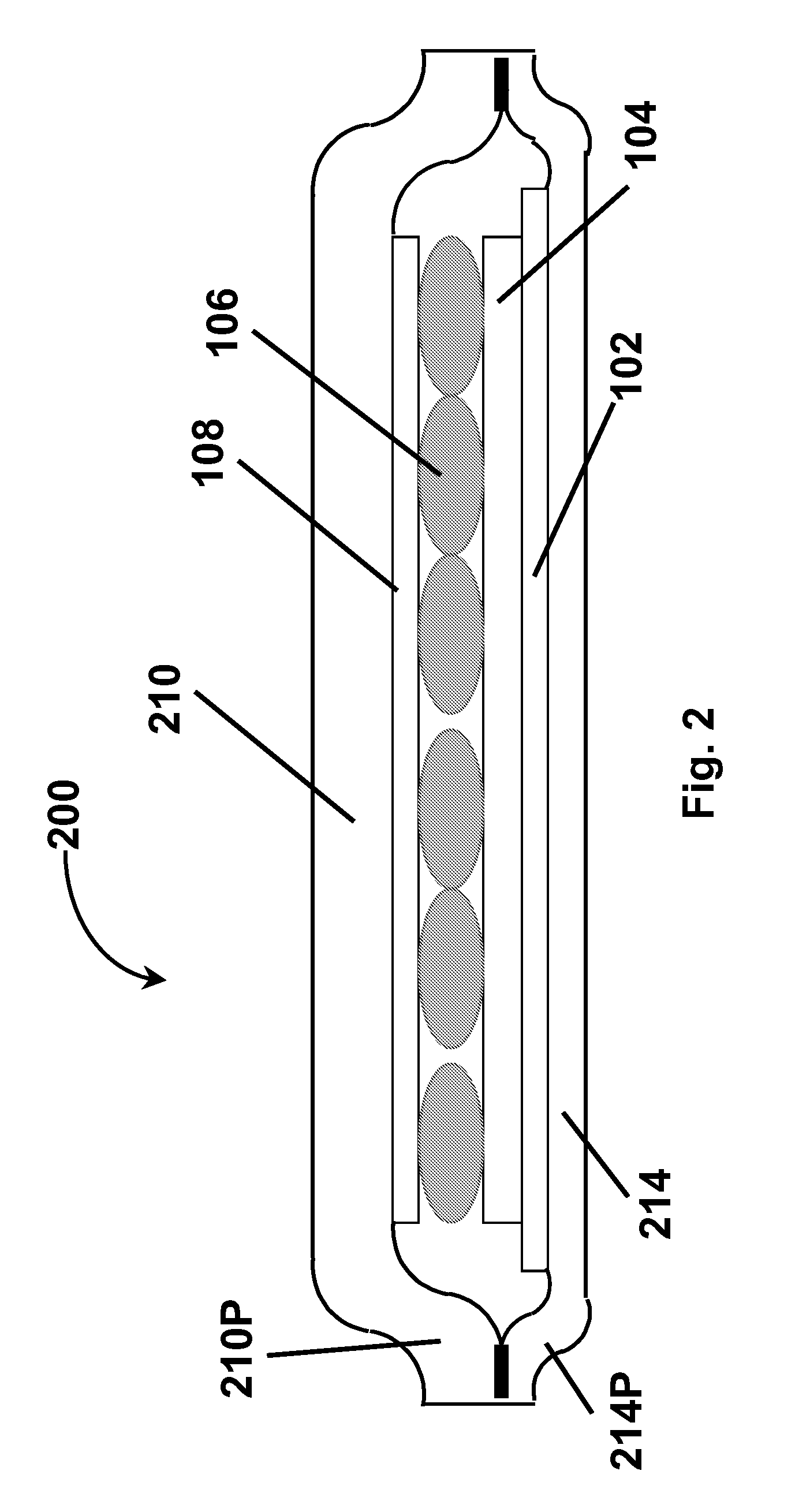Electro-optic display with edge seal
a technology of optical display and edge seal, which is applied in the direction of non-linear optics, static indicating devices, instruments, etc., can solve the problems of inadequate service life of these displays, preventing their widespread use, and gas-based electrophoretic media appearing to be susceptible to the same types of problems
- Summary
- Abstract
- Description
- Claims
- Application Information
AI Technical Summary
Benefits of technology
Problems solved by technology
Method used
Image
Examples
Embodiment Construction
[0129] Flexible, including rollable, electro-optic displays, especially those using encapsulated electrophoretic media, present important new marketing opportunities; for example, large displays which can be stored in a compact form may be useful as additional display devices on electronic devices which are presently equipped only with a small display screen but where a larger display screen would often be useful; examples of such devices include cellular telephones equipped to receive electronic mail. However, such flexible electro-optic displays will typically require sealing to prevent the ingress of water vapor and other environmental contaminants which can adversely affect the electro-optic properties or operating lifetime of the display. The aforementioned U.S. Pat. Nos. 6,982,178 and 7,110,164 and Patent Publication No 2004 / 0155857 all discuss the sealing of electro-optic displays, but most of the displays there considered are rigid, being formed on glass or similar backplane...
PUM
| Property | Measurement | Unit |
|---|---|---|
| diameter | aaaaa | aaaaa |
| thickness | aaaaa | aaaaa |
| thickness | aaaaa | aaaaa |
Abstract
Description
Claims
Application Information
 Login to View More
Login to View More - R&D
- Intellectual Property
- Life Sciences
- Materials
- Tech Scout
- Unparalleled Data Quality
- Higher Quality Content
- 60% Fewer Hallucinations
Browse by: Latest US Patents, China's latest patents, Technical Efficacy Thesaurus, Application Domain, Technology Topic, Popular Technical Reports.
© 2025 PatSnap. All rights reserved.Legal|Privacy policy|Modern Slavery Act Transparency Statement|Sitemap|About US| Contact US: help@patsnap.com



